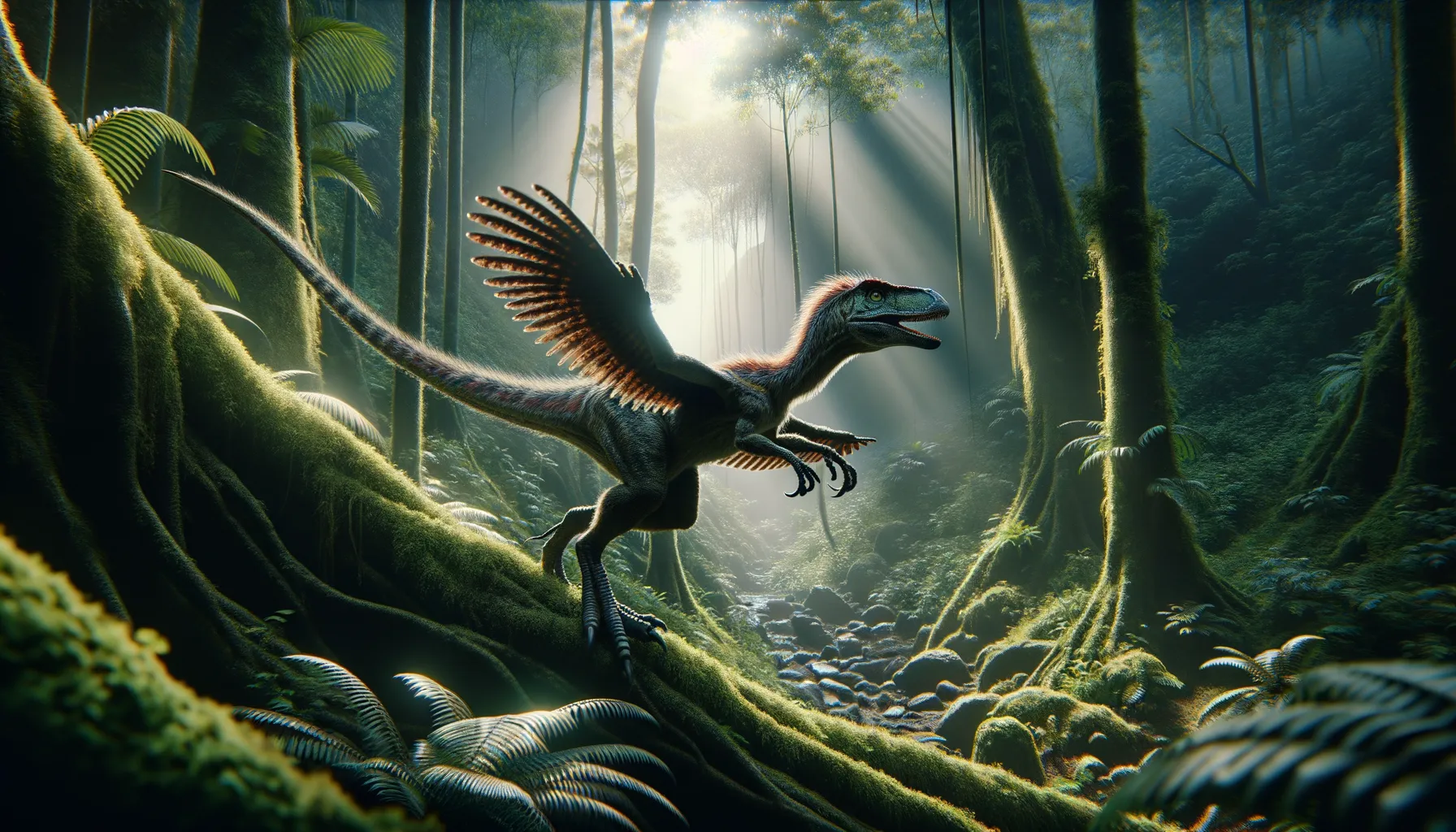
Microraptor
The four-winged glider of the Cretaceous.
Period
Cretaceous
Length
Up to 77 centimeters long.
Height
About 30 centimeters tall.
Weight
Approximately 1 kilogram.
Microraptor was a small, feathered dinosaur known for its four wings, allowing it to glide between trees. Living during the Cretaceous period, it was part of the rich ecosystem that thrived in the forested areas of what is now China. Its unique body structure suggests it could maneuver through dense foliage with ease, capturing small prey with its sharp claws and teeth.
Diet
Microraptor was carnivorous, feeding on small animals like birds, fish, and insects. Its sharp teeth and claws suggest it was adapted to capturing and holding its prey efficiently, making the most of its arboreal environment.
Hunting
Microraptor likely hunted by gliding silently between trees, ambushing unsuspecting prey. Its ability to move quickly and quietly through the canopy provided a tactical advantage over its prey.
Environmental challenges
Microraptor faced environmental challenges such as competition for food with other small predators. Its gliding abilities helped it exploit ecological niches that other dinosaurs could not occupy. Seasonal changes in climate and food availability would have also impacted its survival, requiring adaptability.
Speed
Quick and agile in the trees.
Lifespan
Estimated to be around 10-15 years.
First discovery
First discovered in Liaoning, China in 2000.
Fun Facts
- Microraptor was a small dinosaur from the early Cretaceous period, about the size of a crow.
- It had four wings instead of the usual two, with feathers on both its arms and legs, allowing it to glide through the air.
- Fossil evidence suggests that Microraptor had iridescent feathers, similar to a crow or magpie, which might have been used for display or camouflage.
- While primarily gliding, Microraptor could walk easily on land, thanks to its flexible legs and claws.
- Microraptor's diet included small animals like birds, lizards, and even fish, as indicated by fossils with preserved stomach contents.
- The first fossils of Microraptor were discovered in northeastern China, where many well-preserved feathered dinosaurs have been found.
- Microraptor is one of the smallest non-avian dinosaurs known to science, making it a unique and exciting part of paleontological studies.
Growth and Development
Microraptor hatchlings likely developed rapidly to gain independence from their parents quickly. Juveniles probably relied on gliding to avoid predators and to learn effective hunting strategies. Their growth involved developing stronger flight muscles and honing their climbing skills.
Habitat
It inhabited forested regions, providing ample cover and climbing opportunities. The dense vegetation offered Microraptor necessary camouflage and a plethora of small creatures to hunt. Its habitat was rich in resources, ensuring a steady food supply within the forest canopy.
Interaction with other species
Microraptor coexisted with other small dinosaurs, leading to competition and predation. It might have occasionally interacted with larger predators, forcing it to rely on agility and stealth for survival. Intraspecific competition likely existed among Microraptors for territory and mates.
Natural lifespan
In the wild, its natural lifespan could reach up to 15 years.
Reproduction
Microraptor was oviparous, laying small, hard-shelled eggs. Nests were likely built in secluded, out-of-reach forest areas to protect the eggs from predators. The young may have been cared for by parents until they could hunt and glide effectively on their own.
Social behaviour
Microraptor might have lived in small groups for protection and cooperative feeding. Social interactions would have included communication through vocalizations and displays. Group living could have provided advantages in locating food and avoiding predators.
Fossil locations
The most significant Microraptor fossils have been found in the Liaoning Province of China. The well-preserved fossils provide crucial insights into its anatomy and lifestyle, thanks to the area's fine-grained sedimentary deposits. These locations are part of the Yixian Formation, renowned for its exceptional prehistoric preservation.
